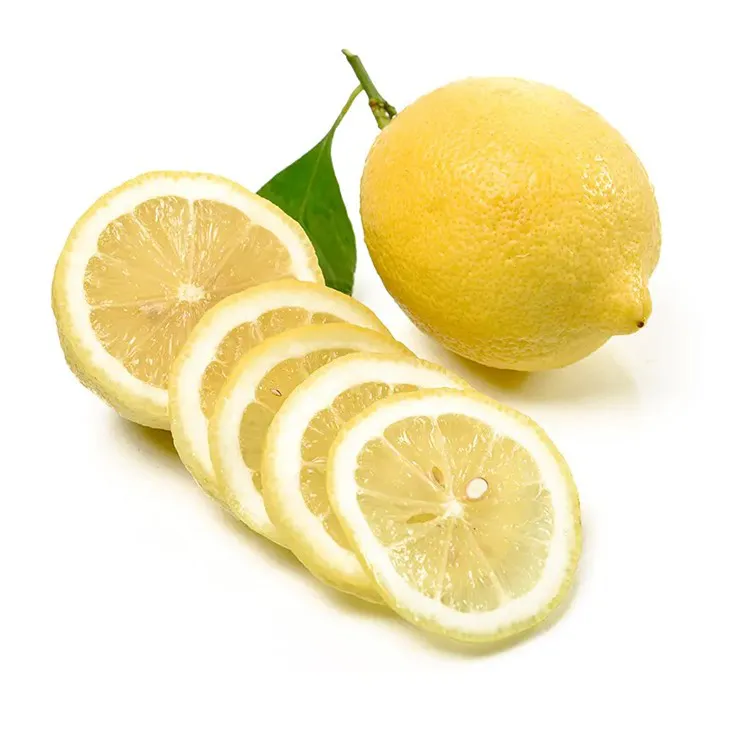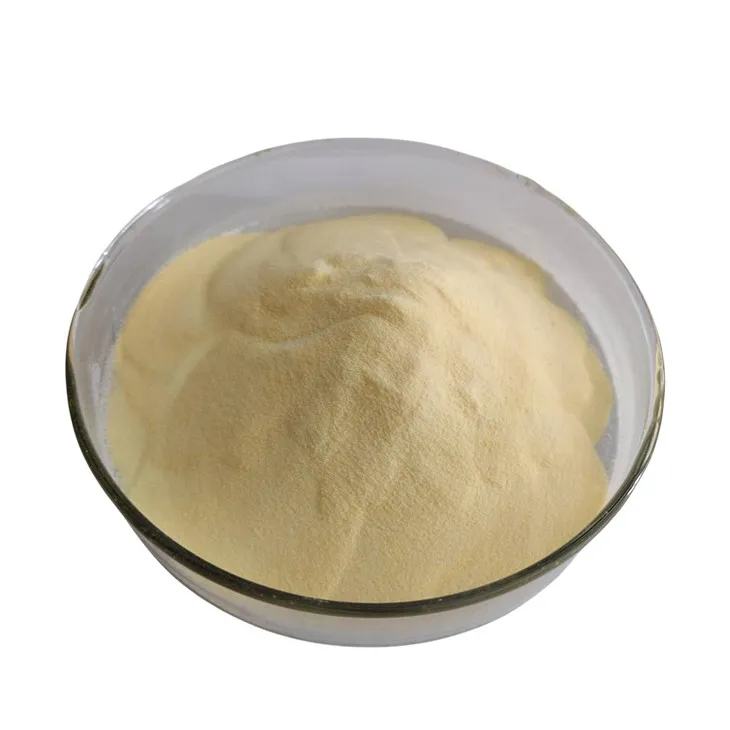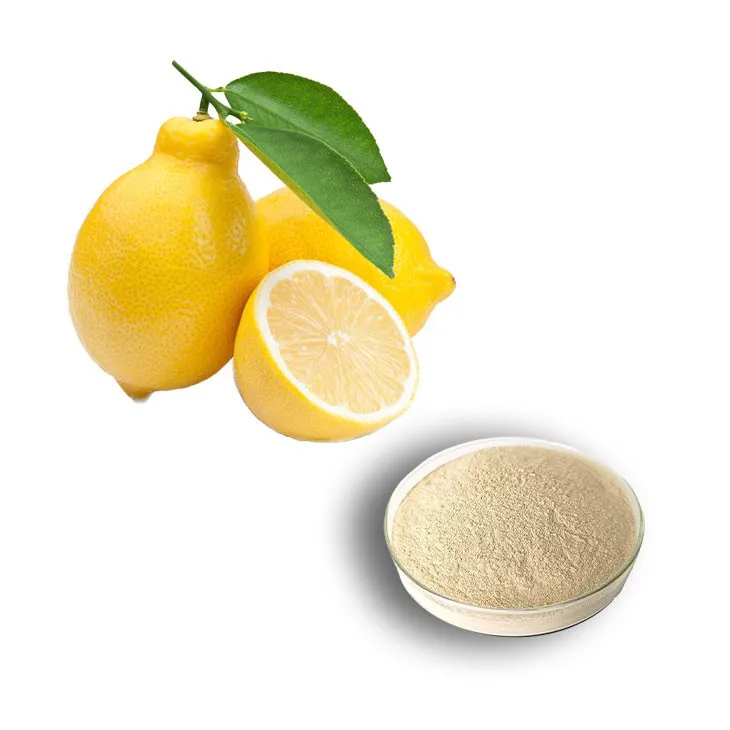- 0086-571-85302990
- sales@greenskybio.com
Optimal Bioavailability of Lemon Extracts
2024-11-28

1. Introduction
Lemon Extracts are rich in various beneficial compounds, such as vitamins (especially vitamin C), flavonoids, and phenolic acids. However, the bioavailability of these compounds, which refers to the proportion of a substance that enters circulation and has an active effect, can be influenced by multiple factors. Maximizing the bioavailability of Lemon Extract is crucial for reaping its full health benefits. This article will explore different aspects related to achieving optimal bioavailability of Lemon Extract.

2. Chemical Composition and Absorption
2.1 Vitamin C
Vitamin C is one of the most prominent components in lemon extract. It is a water - soluble vitamin. The absorption of vitamin C occurs mainly in the small intestine. For efficient absorption, it needs to be in a suitable form. In lemon extract, vitamin C exists in both ascorbic acid and dehydroascorbic acid forms. Ascorbic acid is the most common form, and it is absorbed through sodium - dependent vitamin C transporters. However, factors like the presence of other substances in the digestive tract can affect its absorption. For example, high levels of glucose can compete with vitamin C for these transporters, reducing its bioavailability.
2.2 Flavonoids
Flavonoids in lemon extract, such as Hesperidin and eriocitrin, are known for their antioxidant properties. Their absorption is a more complex process. Flavonoids are generally large molecules, and they need to be broken down into smaller metabolites before absorption. This breakdown mainly occurs in the gut through the action of gut microbiota. Different flavonoids may have different absorption rates. For instance, Hesperidin has relatively low bioavailability in its native form. It needs to be hydrolyzed by enzymes in the gut to its aglycone form, hesperetin, for better absorption. The presence of certain dietary fibers or other food components can either enhance or inhibit this hydrolysis process, thus affecting the bioavailability of flavonoids.
2.3 Phenolic Acids
Phenolic acids in lemon extract, like caffeic acid and ferulic acid, also contribute to its health - promoting effects. These acids are absorbed through the intestinal epithelium. Their absorption can be influenced by their chemical structure. For example, the degree of esterification of phenolic acids can affect their solubility and, consequently, their absorption. The more esterified the phenolic acid, the lower its solubility in water and the more difficult it is to be absorbed. Additionally, interactions with other food components, such as proteins or lipids, can also impact the bioavailability of phenolic acids.

3. Influence of Processing Techniques
3.1 Extraction Methods
- The extraction method used for lemon extract can significantly affect its bioavailability. Solvent extraction is a common method. When using solvents like ethanol or water - ethanol mixtures, different solvent ratios can result in different extraction efficiencies of active compounds. For example, a higher ethanol concentration may be more effective in extracting flavonoids, but it may also extract some unwanted compounds that could potentially interfere with the bioavailability of the desired components.
- Supercritical fluid extraction is another technique. Using supercritical carbon dioxide, it can extract compounds more selectively. This method can preserve the integrity of active compounds better compared to traditional solvent extraction. For example, it can extract volatile components in lemon extract without causing significant degradation, which is beneficial for maintaining the bioavailability of these compounds.
3.2 Processing Temperature
- Temperature during processing plays a crucial role. High - temperature processing, such as during drying or pasteurization, can cause degradation of some heat - sensitive compounds in lemon extract. For example, vitamin C is highly sensitive to heat. Prolonged exposure to high temperatures can lead to significant losses of vitamin C, reducing its bioavailability. Therefore, mild processing temperatures should be preferred when possible.
- On the other hand, some processing techniques at low temperatures, like cold - pressing for lemon juice extraction, can help preserve the integrity of bioactive compounds. Cold - pressed lemon juice contains a higher amount of intact flavonoids and vitamin C, which are more likely to be absorbed efficiently in the body.
3.3 Particle Size Reduction
- Reducing the particle size of lemon extract can enhance its bioavailability. When the particles are smaller, the surface area available for interaction with digestive enzymes and absorption sites in the gut is increased. For example, micronized lemon powder has a larger surface area compared to regular - sized powder. This allows for more efficient breakdown and absorption of the active compounds in the extract.
- However, extremely small particle sizes may also pose some challenges. For instance, nanoparticles may have different physicochemical properties and interactions in the body compared to larger particles. There is also a need to ensure the safety of nanoparticles, as they may have potential toxic effects if not properly formulated.

4. Influence of Individual Physiological Factors
4.1 Digestive Enzymes
- The activity of digestive enzymes in an individual's gut can vary widely. Enzymes such as esterases and glycosidases play important roles in the breakdown of lemon extract components. For example, esterases are involved in the hydrolysis of ester - linked phenolic acids, and glycosidases are responsible for breaking down flavonoid glycosides. People with enzyme deficiencies may have lower bioavailability of lemon extract components. For instance, individuals with lactase deficiency may also have reduced activity of other glycosidases, which could affect the absorption of flavonoid glycosides in lemon extract.
- Age can also influence digestive enzyme activity. In older adults, the production of digestive enzymes may decline, leading to less efficient breakdown and absorption of lemon extract components. Dietary factors can also modulate enzyme activity. For example, a diet high in certain fruits and vegetables may enhance the activity of some digestive enzymes, while a diet high in processed foods may have the opposite effect.
4.2 Gut Microbiota
- The gut microbiota has a profound impact on the bioavailability of lemon extract. Different species of gut bacteria can metabolize lemon extract components in different ways. For example, some bacteria can hydrolyze flavonoid glycosides, converting them into more absorbable forms. The composition of gut microbiota can be influenced by factors such as diet, antibiotics use, and lifestyle. A diet rich in fiber can promote the growth of beneficial gut bacteria, which in turn can enhance the bioavailability of lemon extract.
- Conversely, the use of antibiotics can disrupt the gut microbiota balance, reducing the ability of gut bacteria to metabolize lemon extract components. Lifestyle factors such as stress and lack of exercise can also affect gut microbiota, and ultimately, the bioavailability of lemon extract.
4.3 Health Conditions
- Certain health conditions can affect the bioavailability of lemon extract. For example, individuals with gastrointestinal disorders like Crohn's disease or celiac disease may have damaged intestinal mucosa, which can impair the absorption of lemon extract components. Inflammatory bowel diseases can also cause changes in gut microbiota and digestive enzyme activity, further reducing bioavailability.
- Metabolic disorders such as diabetes can also play a role. As mentioned earlier, high blood glucose levels in diabetes can compete with vitamin C for absorption, reducing its bioavailability. Additionally, liver and kidney diseases can affect the metabolism and excretion of lemon extract components, respectively, which can impact their overall bioavailability in the body.

5. Strategies to Ensure Optimal Bioavailability
5.1 Dietary Considerations
- Consuming lemon extract in combination with certain foods can enhance its bioavailability. For example, pairing lemon extract with foods rich in healthy fats, like avocados or nuts, can improve the absorption of fat - soluble components in the extract. The lipids can form micelles with the hydrophobic components of lemon extract, facilitating their passage through the intestinal wall.
- Also, consuming lemon extract with foods high in dietary fiber can have a positive impact. Fiber can slow down the transit time in the gut, allowing more time for the breakdown and absorption of lemon extract components. However, it is important to note that excessive fiber intake may also have an adverse effect on bioavailability, so a balanced amount is key.
5.2 Supplementation and Formulation
- When using lemon extract supplements, proper formulation is essential. The supplement should be designed to protect the active compounds from degradation during storage and digestion. For example, encapsulation techniques can be used to protect lemon extract components from environmental factors such as air, moisture, and light. This can help maintain their integrity until they reach the site of absorption in the gut.
- The form of the supplement also matters. For instance, liquid - based lemon extract supplements may be more easily absorbed compared to solid tablets, as they do not require the additional step of disintegration in the stomach. However, tablets may be more convenient for some people, so formulating tablets with proper disintegration properties can also improve bioavailability.
5.3 Lifestyle Modifications
- Maintaining a healthy lifestyle can have a positive impact on the bioavailability of lemon extract. Regular exercise can improve gut motility and enhance the function of digestive enzymes. This can lead to more efficient breakdown and absorption of lemon extract components. For example, aerobic exercise has been shown to increase the activity of some gut - related enzymes.
- Managing stress is also important. High stress levels can disrupt gut microbiota and digestive function. Stress - reduction techniques such as meditation or yoga can help maintain a healthy gut environment, which is beneficial for the bioavailability of lemon extract.
6. Conclusion
Optimal bioavailability of lemon extract is a complex issue that is influenced by multiple factors, including its chemical composition, processing techniques, and individual physiological factors. By understanding these factors and implementing appropriate strategies such as proper dietary combinations, appropriate supplementation formulation, and lifestyle modifications, we can maximize the bioavailability of lemon extract and fully utilize its health - promoting properties. Future research may further explore new extraction and formulation techniques, as well as the interactions between lemon extract and different physiological states, to provide more comprehensive guidance on achieving optimal bioavailability of lemon extract.
FAQ:
What is the chemical composition in lemon extract relevant to absorption?
Lemon extract contains various components relevant to absorption. Citric acid is one of the main components, which can affect the acidity in the digestive tract and may influence the solubility and absorption of other substances. Flavonoids in lemon extract, such as Hesperidin and naringin, also play a role. These flavonoids can interact with cell membranes and transporters in the intestine, potentially enhancing or inhibiting the absorption of certain nutrients. Additionally, lemon extract may contain small amounts of essential oils, which could have an impact on the overall bioavailability through their effect on the gut environment.
How do processing techniques affect the bioavailability of lemon extract?
Different processing techniques can have diverse effects on the bioavailability of lemon extract. For example, heat treatment during processing can break down some of the complex compounds in lemon extract. This might lead to the release of more bioactive substances, increasing their availability for absorption. However, excessive heat can also destroy certain heat - sensitive components, reducing bioavailability. Extraction methods also matter. Solvent - based extraction might extract different components compared to mechanical extraction, and the choice of solvent can influence the purity and bioavailability of the final extract. Moreover, processes like drying can affect the physical structure of the extract, which in turn can impact how easily it is absorbed in the body.
What individual physiological factors influence the bioavailability of lemon extract?
Several individual physiological factors play a role. The digestive system's function is crucial. People with different levels of stomach acid secretion may experience different absorption rates of lemon extract. Those with lower stomach acid may have reduced ability to break down certain components, affecting bioavailability. The gut microbiota also has an impact. Different types of bacteria in the gut can metabolize components of lemon extract in various ways. For instance, some bacteria can convert flavonoids into more or less bioactive forms. Additionally, an individual's age, overall health status, and genetic factors can influence the absorption and metabolism of lemon extract. For example, the activity of certain enzymes involved in the absorption process may vary based on genetic makeup.
Can combining lemon extract with other substances enhance its bioavailability?
Yes, combining lemon extract with certain substances can enhance its bioavailability. For example, when combined with vitamin C - rich foods or supplements, the antioxidant effects may be enhanced. Vitamin C can help maintain the stability of some bioactive components in lemon extract, and may also improve the absorption of flavonoids. Additionally, some fats or oils can enhance the absorption of fat - soluble components in lemon extract. However, it is important to note that not all combinations are beneficial, and some substances may interact negatively, reducing bioavailability.
How can one measure the bioavailability of lemon extract?
Measuring the bioavailability of lemon extract can be complex. One common method is through pharmacokinetic studies. This involves administering lemon extract to subjects and then monitoring the levels of its key components in the blood over time. By analyzing the concentration - time curves, parameters such as peak concentration, time to reach peak concentration, and area under the curve can be determined, which can provide insights into the absorption, distribution, metabolism, and excretion of the extract. Another approach is to study the excretion of metabolites in urine or feces. By analyzing the types and amounts of metabolites excreted, one can infer how much of the lemon extract has been absorbed and metabolized in the body.
Related literature
- Bioavailability of Flavonoids from Lemon Extract: A Comprehensive Review"
- "The Impact of Processing on the Chemical Composition and Bioavailability of Lemon Extract"
- "Individual Variability in the Bioavailability of Lemon - Derived Nutrients: Physiological Factors at Play"
- ▶ Hesperidin
- ▶ Citrus Bioflavonoids
- ▶ Plant Extract
- ▶ lycopene
- ▶ Diosmin
- ▶ Grape seed extract
- ▶ Sea buckthorn Juice Powder
- ▶ Fruit Juice Powder
- ▶ Hops Extract
- ▶ Artichoke Extract
- ▶ Mushroom extract
- ▶ Astaxanthin
- ▶ Green Tea Extract
- ▶ Curcumin
- ▶ Horse Chestnut Extract
- ▶ Other Product
- ▶ Boswellia Serrata Extract
- ▶ Resveratrol
- ▶ Marigold Extract
- ▶ Grape Leaf Extract
- ▶ New Product
- ▶ Aminolevulinic acid
- ▶ Cranberry Extract
- ▶ Red Yeast Rice
- ▶ Red Wine Extract
-
Wheat Germ Extract
2024-11-28
-
Genistein
2024-11-28
-
Eucommia Ulmoides Extract
2024-11-28
-
Fig Extract
2024-11-28
-
Mangosteen extract powder
2024-11-28
-
Alisma Extract
2024-11-28
-
Nutmeg Extract
2024-11-28
-
Yellow Pine Extract
2024-11-28
-
Polygonum multiflorum extract
2024-11-28
-
Kelp Extract Powder
2024-11-28





















